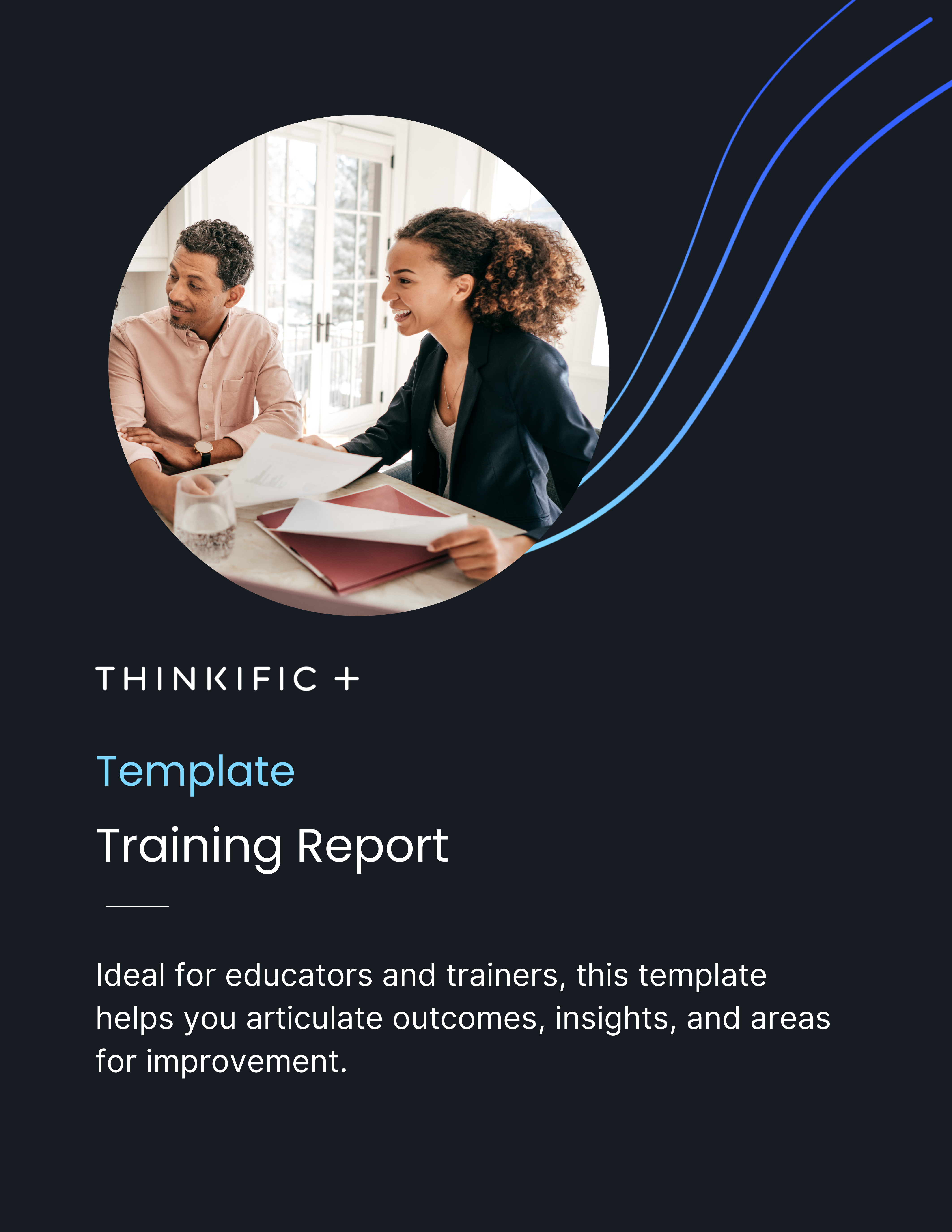Creating a great training report can be tricky. You’ve put in so much effort to run your training sessions, but when it’s time to write it all down in a report, it’s not always easy to get it right. How do you ensure your report shows all the hard work and impact of your training?
This is a common challenge for training professionals. A good training report is more than just a list of what happened. It’s a key tool for looking at how well your training worked and where it can get even better. It’s about taking the big picture of your training and putting it into a clear and useful format.
That’s why we’ve put together this guide. We’re going to show you how to use training report templates effectively. We’re not just talking about filling in blanks — we’re giving you tips and strategies to make your reports really meaningful and a true reflection of your training’s worth.
Skip Ahead:
- Introduction to training reports
- What is a training report template?
- Choosing the right training report template
- Step-by-step guide to filling out a training report
- Best practices in training report creation
- Tools and software for training report creation
- FAQs
- Conclusion
Introduction to Training Reports
Training reports are essential in helping your organization grow and improve. They give you a detailed look at what’s working in your training programs and what needs a bit more attention. These reports help see how your training aligns with your company’s goals and figure out if the training is paying off.
These reports are super useful, especially for things like required training. Say you’re doing cybersecurity training — these reports can show you who’s keeping up and who’s not, which is really important because not following through can cost your company a lot.
Who needs these reports? Well, if you or one of your clients is managing employee training and development, you can use these templates to help ensure that the company follows certain rules and is compliant.
How to use them? It’s a good idea to run these reports regularly to make sure everyone is finishing their training. You can also look at progress reports and time logs to get a sense of how engaged everyone is, both as a team and individually.
Why is reporting learner progress important?
Reporting on how learners are doing is a big part of running a training program. Your Learning Management System (LMS) should make it easy to set up courses and get people enrolled and keep track of how everyone is doing. Sure, you can use other tools to check results and see how the training is going, but doing as much as possible in your LMS streamlines things.
If you don’t have an LMS, you probably know how tough it can be to keep track of everyone’s progress and performance — going through all those documents, spreadsheets, and assignments manually? That’s a headache.
Managing learner progress
The one in charge of training will need to see clearly how everyone is doing in their courses. A good LMS will help check out how far each learner has gotten, see their grades, and even look at their last login, among other things.
Analyzing training outputs
When you’re looking at how effective your training is, you want to see if the training is making a difference in how people do their jobs. Some LMS platforms let you compare how people are doing at work with how they did in the training, giving you a full picture of how effective your training is.
Receiving course feedback
Feedback from the people taking your courses is key. You need to hear what they think — the good and the bad. Especially if you’re hearing the same things repeatedly, that’s important for improving your courses.
What is a training report template?
A training report template is a tool to help you write up how your training session went. It makes gathering all the important info easier, like how engaged everyone was and how they’re applying what they learned.
Choosing the right training report template
Picking the right template for your training report means thinking about a few things:
- Alignment with training goals: Your template should help you gather info that’s really relevant to what you’re trying to achieve with your training.
- Ease of use: It should be simple to use so you can get your data in there without any fuss.
- Customization options: Being able to tweak the template to fit different kinds of training is really handy.
- Compatibility with analysis tools: Make sure the template works well with any tools you’re using to look at your data.
- Scope for detailed feedback: You’ll want a template that lets you get into the nitty-gritty of how people felt about the training.
Components of a Training Report
| Component | Purpose |
| Training Objectives and Goals | Defines what the training aimed to achieve, setting the benchmark for evaluating effectiveness. |
| Summary of Training Content | Provides an overview of the topics covered, giving context to the outcomes and assessments. |
| Participant Details | Records who attended the training, essential for correlating outcomes with specific groups or individuals. |
| Methods of Training Delivery | Outlines how the training was conducted (e.g., online, in-person), important for understanding the training dynamics and participant engagement. |
| Assessment and Evaluation Results | Shows how participants performed in any tests or evaluations, indicating the training’s effectiveness in imparting knowledge or skills. |
| Feedback from Participants | Offers insights into the participants’ perspectives on the training, valuable for gauging satisfaction and areas for improvement. |
| Observations and Recommendations | Includes the trainer’s or facilitator’s notes on the training process and suggestions for future sessions, which can be crucial for continuous improvement. |
Step-by-step guide to filling out a training report
Writing a training report well is key to capturing what your training program achieved. Here’s a simple guide on how to use a training report template effectively, along with some handy tips:
- Start with clear objectives: Kick things off by spelling out what you wanted the training to achieve. This gives you a clear target for what you’re measuring.
- Summarize the training content: Jot down a brief but thorough summary of what the training covered. Talk about the main topics, how you taught them, and any key materials you used.
- Detail participant information: Write down who was in the training. Include their names, what they do, and any other info that might color how they took the training.
- Describe methods of delivery: Talk about how you delivered the training. Was it a workshop, online, or a mix of both? This helps show how people might have interacted with and taken in the training.
- Incorporate assessment results: If you had any tests or ways to measure how well people learned, detail those results here. This gives you hard facts on how well the material was understood.
- Collect and include participant feedback: Get feedback from those who took the training. Surveys, chats, or interviews are great for this. This feedback tells you how the training was received and enjoyed.
- Make observations and recommendations: Wrap up with your own thoughts on how the training went and ideas for future sessions. This should be a mix of what the data tells you and what you personally observed.
Best practices in training report creation
Crafting an effective training report is not just about documenting what happened — it’s about communicating the value and impact of the training in a clear and meaningful way. Here’s how you can make sure your training report really hits the mark:
- Aim for clarity: The key is to use language that’s easy to understand. Avoid industry jargon or technical terms that might confuse readers. Think about explaining your points as if you’re talking to someone who wasn’t there. Your goal is for anyone, regardless of their background or familiarity with the subject, to grasp the key messages of your report.
- Ensure completeness: A comprehensive report leaves no stone unturned. Start with your training objectives — what were you aiming to achieve? Detail who participated and the methods you used. Describe the training activities and the content covered. And don’t forget about the outcomes — what were the tangible results of the training? Finally, include any participant feedback or evaluations. This complete picture helps stakeholders understand the effectiveness of the training.
- Maintain relevance: Stay laser-focused on the objectives of your training. Every piece of information in your report should tie back to these goals. If something doesn’t directly contribute to understanding how the training met (or didn’t meet) its objectives, it’s probably not essential. This focus helps keep your report streamlined and purposeful.
- Incorporate feedback and evaluations: This is where you bring in both qualitative and quantitative data. Quantitative data, like test scores or completion rates, provide objective measures of success. Qualitative data, such as participant feedback and personal reflections, offer insights into the training’s impact on an individual level. Combining these two types of data gives a well-rounded view of your training’s effectiveness.
Tools and software for training report creation
Keeping your team sharp with the latest skills is key, and that’s where employee training software shines. It makes it a breeze to keep tabs on your team’s training progress with comprehensive tools to assign and track training modules, helping everyone grow professionally.
Benefits of employee training tracking software
Using this kind of software comes with some big pluses:
- Centralized information: It puts all your training info in one spot, so you can easily see how everyone’s doing and spot areas to beef up.
- Loads of options: There’s a whole bunch of software out there, each with its own cool features. We’ve scoped out the top ones to give you the lowdown and help you choose the best fit.
Key features to look for in software for tracking employee training
Picking the right software? Keep an eye out for these features:
- Easy and customizable: You want something that’s a cinch to use and can be tweaked to suit your business.
- Tracks it all: Look for software that lets you see who’s finished their training, who’s on track, and who might need a nudge.
- One-stop database: A place where all your training data lives, making it super easy to get to and sift through.
- Smart reporting: Being able to whip up reports is huge. They show you how effective your training is and where you can make it even better.
- Plays well with others: Find software that can buddy up with other systems you use, like HR or payroll, to smooth out your processes.
- Stay in touch: Features that let you talk directly to your team, like notifications, keep everyone in the loop and engaged.
- Keeps records straight: Good record-keeping is essential to stay on top of HR compliance and track everyone’s progress.
- Friendly on the wallet: Especially for smaller businesses, you want something that won’t break the bank but still does the job.
Tools to consider
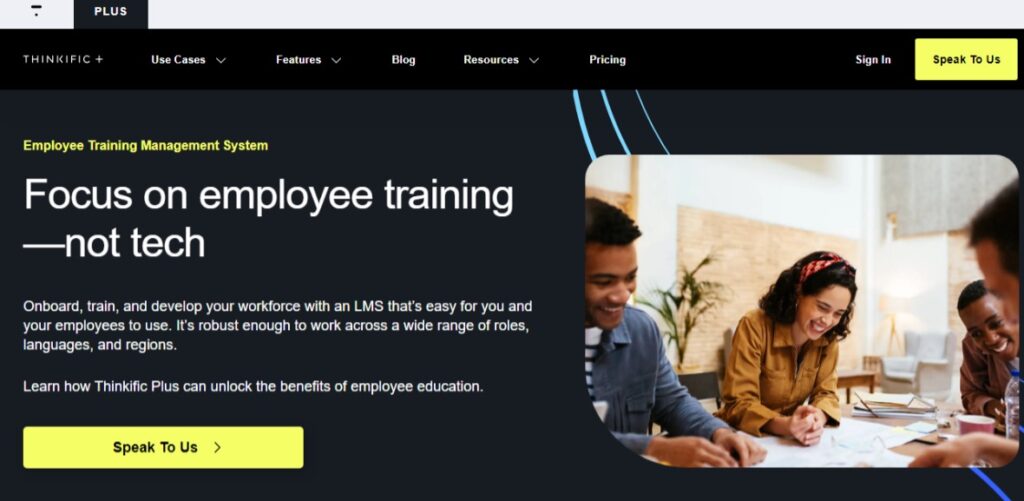
Thinkific Plus is a top-notch platform for creating, marketing, and delivering online courses. It’s a perfect fit for businesses keen on offering professional training.
Key features of Thinkific
- Comprehensive Course Creation Tools: Offers intuitive tools for creating engaging and interactive online courses.
- Detailed Tracking and Reporting: Tracks learner progress, course completion rates, and engagement metrics.
- Customizable Learning Experience: Allows for the personalization of courses to align with specific training objectives.
- Integration Capabilities: Seamlessly integrates with various marketing, analytics, and CRM tools to enhance training management.
- Automated Communication: Features tools for automated communication with learners, including reminders and notifications.
Pros and cons of Thinkific
Pros:
- Easy-to-use interface for hassle-free course creation.
- Detailed tracking for a clear picture of learner progress.
- Customizable content to fit all kinds of training needs.
- Integrates with a bunch of other tools for seamless management.
- Automated messages make keeping in touch a breeze.
Cons:
- Might take a bit to get the hang of the advanced stuff.
- Some of the cooler features are in the pricier plans.
- Focused more on online courses, which might not fit every training scenario.
Thinkific stands out as a one-stop shop for companies diving into online training. Its focus on customization and keeping learners engaged makes it a super valuable tool for impactful training programs. Plus, its easy-to-use interface and wide range of integrations make it a solid choice for creating training reports.
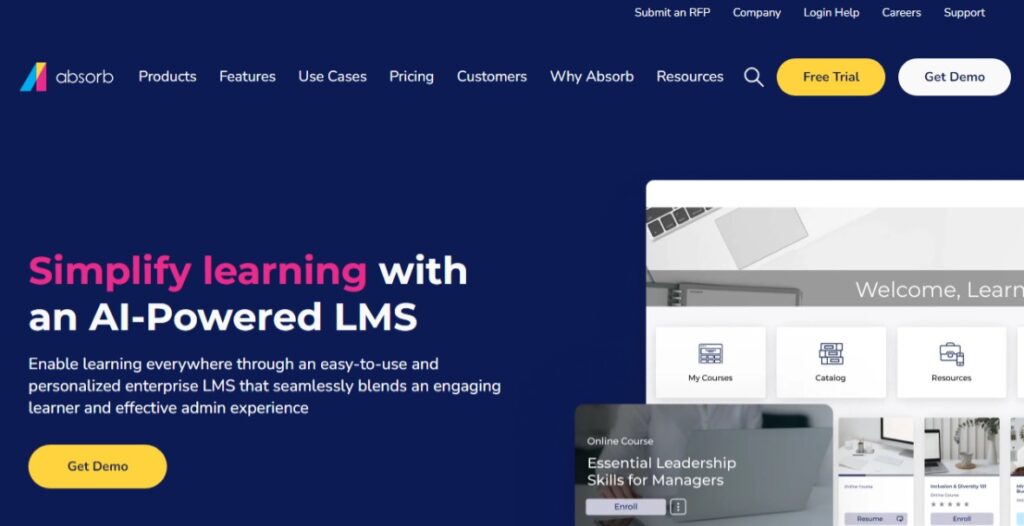
Absorb is a Learning Management System (LMS) that’s all about boosting your training programs.
Key features:
- On-the-dot time tracking: Keeps a precise log of training hours.
- Smooth session management: Makes setting up and running training sessions a piece of cake.
- In-depth reports and analytics: Lets you dig into the data to fine-tune your training.
- Integrates like a dream: Works seamlessly with other systems for a smooth operation.
Pros and cons of Absorb
Pros:
- Pinpoint accuracy in tracking training time.
- Makes managing training sessions super easy.
- Gives you the lowdown with detailed reports.
- Links up well with other business systems.
Cons:
- Might be a bit much to grasp at first.
- Could be pricier than other options.
- May not be as flexible for unique training needs.
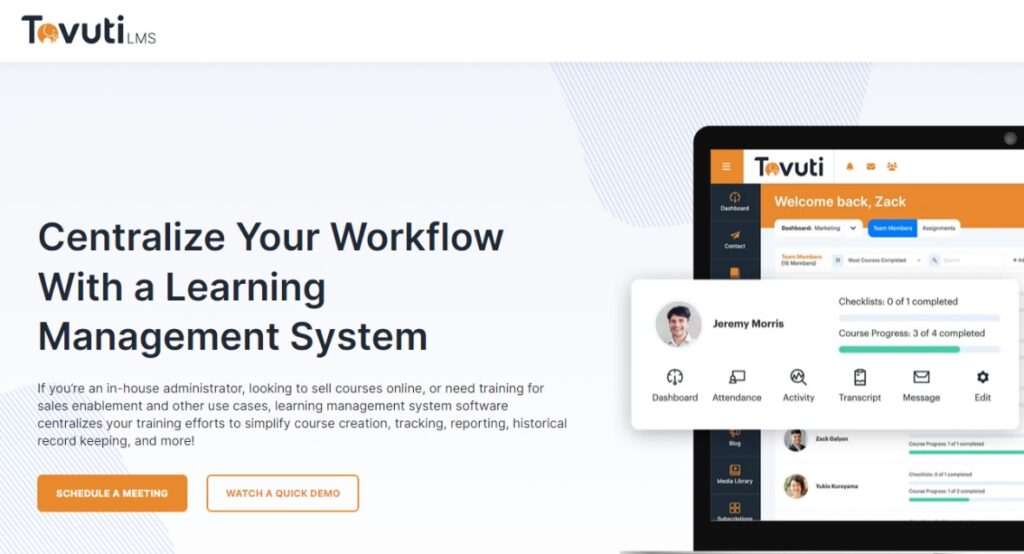
Tovuti is an all-in-one LMS that’s got everything you need to create, run, and track top-notch digital training programs.
Key features:
- Engaging digital training: Easy to set up and deliver training that sticks.
- Sharp tracking and reporting: Keeps tabs on progress and completion rates.
- KPI dashboards and custom reports: Offers insights to make your training even better.
- Certification management: Keeps track of certs, from issuing to renewing.
Pros and cons of Tovuti
Pros:
- Comprehensive LMS with all the bells and whistles.
- User-friendly, so you can focus on the training, not the tech.
- Solid tracking and reporting for a clear view of your program’s success.
- Customizable certs to recognize your team’s hard work.
Cons:
- Might need some tech smarts for the fancier customizations.
- New users might need a little time to get the hang of it.
- Pricing could be steep for smaller businesses.
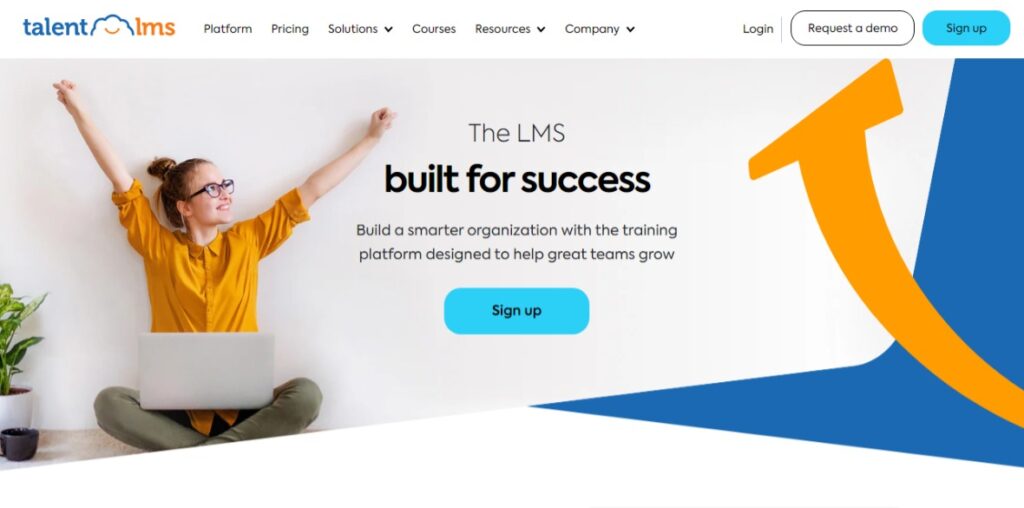
TalentLMS is built for hassle-free training delivery, with all the support you need to make it a success.
Key features:
- Customizable training portal: Keep an eye on everyone’s progress and training time.
- Flexible reports: Get the scoop with a range of report options.
- Automatic updates: Stay informed when courses are wrapped up or certificates need renewal.
Pros and cons of TalentLMS
Pros:
- Super user-friendly, so you can get your training up and running fast.
- Tailor-made portal for tracking exactly what you need.
- Range of reporting options for deep dives into your data.
- Keeps you updated automatically, so nothing slips through the cracks.
Cons:
- Some of the fancier custom stuff might need a bit of tech know-how.
- Pricing varies, so it might be a bit much for smaller teams.
- Could do with a bit of a facelift on the interface.
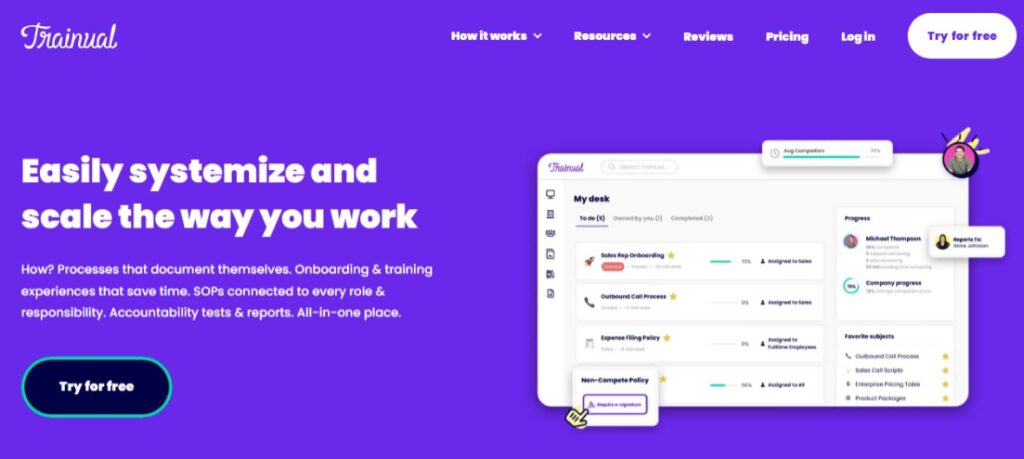
Trainual is all about making it easier to get your team aligned and onboarded with clear, easy-to-follow playbooks.
Key features:
- Straightforward playbook builder: Get everyone on the same page, fast.
- Detailed progress tracking: See how each person and subject is doing.
- Insightful reports: Get the lowdown on completion rates, test scores, and more.
- Easy export options: Take your data and run with it for more analysis.
Pros and cons of Trainual
Pros:
- Makes aligning and onboarding your team a breeze.
- Keeps a close eye on how everyone’s doing.
- Packs a punch with detailed insights and reports.
- Lets you take your data further with easy export options.
Cons:
- New users might need a bit of time to learn the ropes.
- Customizing things could need some extra tech skills.
- Pricing could be a bit much for smaller businesses.
- The interface could use a touch-up for a smoother experience.
FAQs
What should be included in a training report?
A training report should include training objectives, participant details, training content, delivery methods, assessment results, participant feedback, and recommendations for future training.
How often should training reports be updated?
The frequency of updates depends on the training program. Regular training programs may require monthly or quarterly updates, while one-off sessions might only need a single report post-training.
Can training report templates be customized for different types of training?
Yes, most training report templates are designed to be adaptable and can be customized to fit various types of training programs.
What are common mistakes to avoid in training report creation?
Common mistakes include overlooking important data, failing to align the report with training objectives, ignoring participant feedback, and using overly complex or technical language.
Set your customers up for success.
[ Note for writer: The use case related to the blog topic goes here in this section. Change the headline, and tweak the paragraph below according to the Use Case of the blog you are writing about, make sure to mention how Thinkific Plus helps!]
One of the most effective strategies to ensure customer satisfaction and loyalty is by helping them achieve the desired results with your product or service. This is where knowledge becomes a game-changer, and Customer Training LMS Software stands as a pivotal tool in this journey.
A Customer Training LMS Software will help you educate your customers on how to get the most out of what you offer, ensuring they have a satisfying experience, and helping increase customer retention along the way. Learn more about how you can achieve this with Thinkific Plus.
Conclusion
Thank you for exploring the world of training report creation with us.
If you’re ready to elevate your training reporting process and earp the benefits of online learning, our team is here to provide personalized guidance. To learn more about streamlining your training reports and to get pricing details along with a live demo of Thinkific Plus, request a call with a member of our Thinkific Plus solutions team today.

